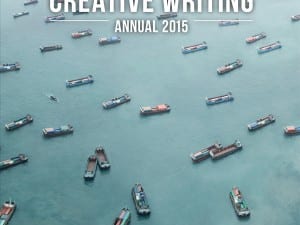By and large, the public conception of a “circus” today, and exactly what it entails, lies somewhere between the sweeping, extravagant, multi-coloured theatrical showpieces devised by Canada’s world-renowned Cirque du Soleil, and childhood memories of clowns and tigers taking turns to amuse and amaze us in the sandy arena of a large — draughty — yellow tent erected on our nearest common or green expanse for a few days before moving on to the next location.
Neither of these impressions, it is safe to say, give us an adequate picture of the state of the modern circus industry, nor testify to the variety of innovative circus companies currently at work in the UK — or indeed to the high level of professional training required of, and available to, aspiring performers. Pervading stereotypes and expectations also mean that any spectacle seeking to classify itself as a “circus”, whether classical or contemporary, has to strive at greater lengths to achieve that validity as an “art form” within the popular consciousness that is so readily accorded to theatre, dance or film.
If there exists any divergence between differing sections of the circus world, it perhaps lies between what can loosely be termed “classical” and “contemporary” approaches to the art. Although hard and fast distinctions are not easy to make, and precise classification remains problematic, in very general terms contemporary work employs circus performance techniques to communicate ideas: “Its content is its first concern”, according to Mason, and while there is not necessarily a linear narrative running through a show, it often possesses more of a narrative or thematic drive than its classical counterparts. “Classical” circus on the other hand normally takes place in the traditional big top tent, and is more focused on displays of technique, with a huge diversity of acts taking to the arena one after the other, announced by a compere or ringmaster, each attempting to achieve marvellous feats of balance or endurance. Such terminology now appears somewhat outdated however, and Brett Jackson, Artistic Director of Swamp Circus, noted that the above groups might be more accurately categorised as either “studio-based” or “travelling” circuses.
Unfortunately, successful examples of the latter have become more rare in recent times, with the travelling circus of yesteryear suffering under what Chris Barltrop, trustee of the Academy of Circus Arts (ACA), the UK’s only remaining travelling circus school, and consultant to various other UK circus projects, termed “handicaps” in the current climate of the industry. Aside from the well-publicised animal rights issues overshadowing the work of traditional touring companies, classical shows perhaps struggle to escape the label of mere “entertainment” to an even greater degree. Having worked, until five years ago, as a ringmaster and director for the world-renowned Moscow State Circus, Barltrop’s experience is considerable, and he stressed that in the right hands, the classical circus can be a “powerful” form and, if “given the opportunity, can be as worthwhile as contemporary circus”. Moreover, the cultural importance of the classical travelling circus should not be overlooked – insofar as it often provides young people’s first experience of live performing arts, which can in turn drive them to pursue a career in any artistic field.
Ali Williams pointed to the importance of “cross-fertilisation” between the classical and contemporary, arguing that “by its very nature” circus crosses the boundaries between numerous art forms, and any distinction between the two is becoming more and more blurred. Much as the “contemporary” circus may have started in an “anti-traditional” vein, in recent years there has been a greater fusion of the two strands, with one genre often drawing on conventions typically associated with the other in order to diversify its show. Thus many contemporary companies have adopted a classical structure for their shows, where numerous different acts follow on one from the other, announced by a ringmaster or compere figure. Similarly, classical circus acts have sought to broaden the multimedia dimension of their shows, with more complex musical and lighting arrangements.
These shifts in method mean that many circus companies now aim their work at older audiences, in the hope of broadening the range of spectators as much as possible. While the expectations of more and more people are being challenged, Jackson still believes that more can be done to change the image of circus in the UK. The paucity of television coverage afforded to the industry — in particular the loss of the “variety show” as a programme format — means that, while images like those of Swamp’s red silk artists featured between programmes on the BBC have done a lot to promote the spectacular nature of modern circus, widespread national publicity, both for individual companies and the art form as a whole, is still difficult to come by. In an international context, Cirque du Soleil remain the industry’s most obvious marketing success story, establishing their work within the public consciousness and in doing so setting a standard of commercial success to which British companies can still only aspire. That said, while Bim Mason from Ciromedia, acknowledged that they have set “a benchmark for production value”, the feeling among some UK artists seems to be that a more corporate outlook, coupled with heavily-produced shows can take away from the intimate, emotional engagement with the audience that circus performance has historically been associated with, and based on.
However, with the news that the Arts Council England has just made the “Circus and Street Arts” a funding priority for 2007, Ali Williams emphasised that British circus is entering an “exciting phase”; a drive for cheaper performance and rehearsal spaces also means that Britain can now begin to catch up with other continental European nations such as France, Switzerland or Italy, in terms of the infra-structure dedicated to the circus industry. Finally then, this spectacular, unacknowledged art form may be beginning to garner the recognition it undoubtedly deserves.
Edward Fortes





